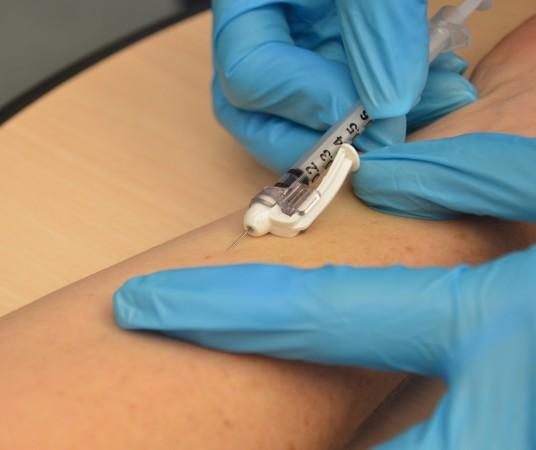
Injections are nothing short of a nightmare for children. Starting from immunization to tetanus, kids have to face the fear of needles and the sharp pin-prick pain multiple times in the early years of their life. With virtual reality, however, the fear of needle may be reduced or even completely eliminated, a study has revealed.
Pediatrician Chad Rudnick has found a solution to keep kids calm at the time of pushing needles inside their veins. Using virtual reality technology, the doctor can ensure the young patient is distracted from the fear and anxiety that comes with an injection.
Rudnick, who is an affiliate professor at Florida University's Charles E. Schmidt College of Medicine, also revealed what motivated him to conduct this study.
The pediatrician said that an 8-year-old patient visited him with a virtual reality headset. The patient placed the device on his head while he administered an injection.
Rudnick observed that the child did not even realize when and how the needle pierced through the vein.
That's when the lightbulb went off in my head. It got me thinking whether this outcome was just a one-time incident or whether it would work again.
The study that Rudnick conducted took into consideration the kids between 6 and 17. They were given a set of questions to be filled both pre and post the injection session. The questionnaire was designed to evaluate the pain, anxiety, and fear the kids go through when the needle is pushed.

A setup was created where the doctor used a 3D VR headset with a smartphone app that helped patients choose rides, including a rollercoaster, helicopter, hot air balloon, etc. The children were then left to enjoy their rides while the injection was administered.
The results of the study showed that the pain realization reduced in about 94 percent of the patients as they remained distracted and concentrated on their virtual reality-driven rides. Rudnick concluded by saying that it can help children get timely vaccinations.
I hope this distraction technique catches on in other pediatric offices, because any method that increases the percentage of children vaccinated on-time and on schedule is critical in primary care pediatrics.
The study, published in the journal Pain Management, talks about several aspects of using virtual reality to keep needle phobia at bay.

















